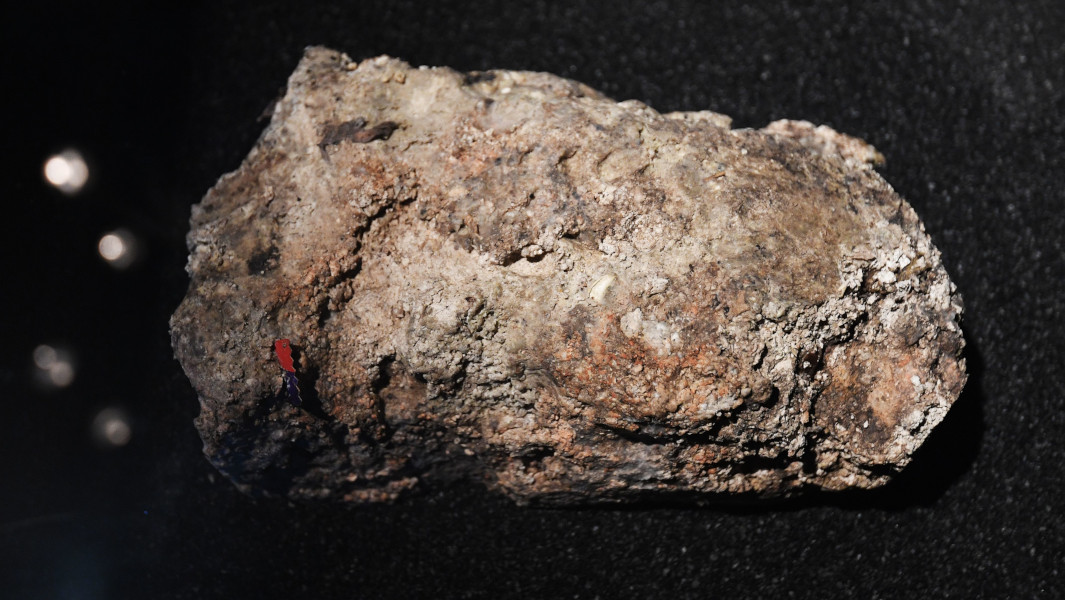Royal flush: world’s largest fatberg clogged London sewage pipe and cost city £220,000

A fatberg is a monstrosity, created in the twisting mess of sewage piping beneath a city – a moving, living glob of congealed fat, cooking oil, nappies, and whatever else is tossed down our drains, absorbed into a hardened block of waste that stinks of excess and modern human irresponsibility.
They’re disgusting. They live beneath us. And they can be the size of an aeroplane – or worse.
If you lived in Whitechapel, London, UK in 2017, the moving mound of manure up your drains was the world’s largest fatberg, an absolute colossus of human waste.
This record-setting fatberg was 250 m (820 ft) long and weighed an estimated 130 tonnes (286,601 lb) according to inspectors from Thames Water, who encountered the blockage in a sewage pipe in London's Whitechapel area in September 2017.
That’s a block of garbage longer than London’s iconic Tower Bridge (240 m), and heavier than the weight of 19 African elephants. Inching, through the sewers, at the speed a human walks.
The Whitechapel fatberg was a stomach churning discovery made in a sewer below Whitechapel in 2017.
— London Museum (@LDN_Museum) August 28, 2024
This monster is 250 metres long (about the length of four football pitches, or the same as @TowerBridge) and weighed 130 tonnes (about the same as 11 double-decker buses). pic.twitter.com/5S8ezKe5yr
Obviously that’s not good for your plumbing. So what to do about all that poo?
The brave, brave workers at Thames Water hazmatted up, armed themselves with high-powered jets and shovels, and descended into the dark to hack at the beast. Seven days a week, for three weeks, the iron-willed (and nose-blind) crew broke up the fatberg and sucked it up into tankers for disposal at a recycling plant in Stratford.
“It’s basically like trying to break up concrete,” said Thames Water’s head of waste networks, Matt Rimmer, to the Guardian.
“It’s frustrating as these situations are totally avoidable and caused by fat, oil and grease being washed down sinks and wipes flushed down the loo.
“We check our sewers routinely but these things can build up really quickly and cause big problems with flooding, as the waste gets blocked.”
And unfortunately, getting rid of this poo doesn’t come cheap.
“The real problem is the cost,” said Thames Water’s Alex Saunders to Vice. “The Whitechapel Fatberg cost £220,000 to break up. That gets reflected in your water bills.”
At the time, Thames Water said it spends about £1 million a month clearing blockages from its sewers in London and the Thames Valley – an average of three fat-related blockages every hour.
London is particularly prone to fatbergs due to its long tracts of Victorian-era sewers. Other recent fatbergs include an 80 m (260 ft) blockage in London's Shepherd's Bush area in 2014 and a 40 m (131 ft) berg in the sewers of Chelsea in 2015.
By the time they killed it, the Whitechapel fatberg amassed a cult following – becoming a topic of awareness (and memes) on social media, featuring on the news, and even making its way into a museum.
And it even inspired a drag show called Fatberg Femmetopia with Glastonbury-performing drag queen Miss HerNia, who starred as the fatberg:
But scientists – and some inquisitive members of the general public – wanted more, so Channel 4 created a TV movie at Abbey Mills Pumping Station in East London, the so-called “the cathedral of sewage,” entitled Fatberg Autopsy: Secrets of the Sewer to learn about what was inside.
“It’s like hitting… rocks. Soft rocks. Looking for blocks of gold,” said Thames Water’s Will Randall to Vice.
And what did they find? Lots of wet wipes, napkins, grease, waste, but also trash – and insight into our modern lives.
“You know those small blue pens you get at the bookies? We found lots of them… someone had obviously had a bad day at the bookies and flushed away their sorrows,” said Thames Water’s Alex Saunders.
“We find false teeth, glasses, gold watches, gold teeth… you name it. We even found a toilet.”
A toilet?
“Yeah, they obviously hadn’t flushed it down the — they lifted a manhole and shoved it down the sewer. But yeah.”
FINALLY found the commemorative manhole cover celebrating the defeat of the Whitechapel fatberg, after 5 years of looking for it. pic.twitter.com/2gaCOqcHTm
— Nat (@unfortunatalie) December 3, 2022
And if the testament of these brave workers (and these horrific images) shows you anything, it's to be mindful of what goes on down there.
“Yes, a lot of the fat comes from food outlets but the wipes and sanitary items are far more likely to be from domestic properties,” says Rimmer.
“The sewers are not an abyss for household rubbish and our message to everyone is clear: please ‘bin it – don’t block it’.”
Header image: Shutterstock


